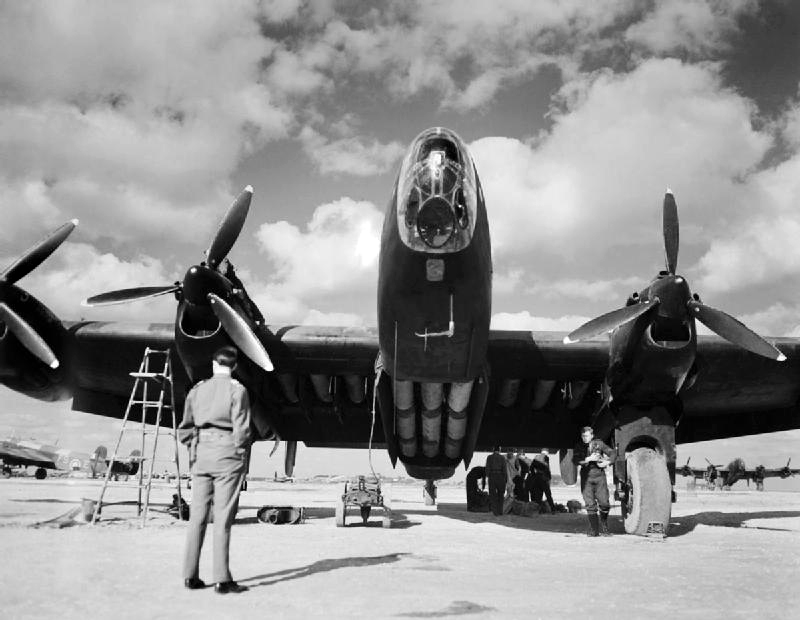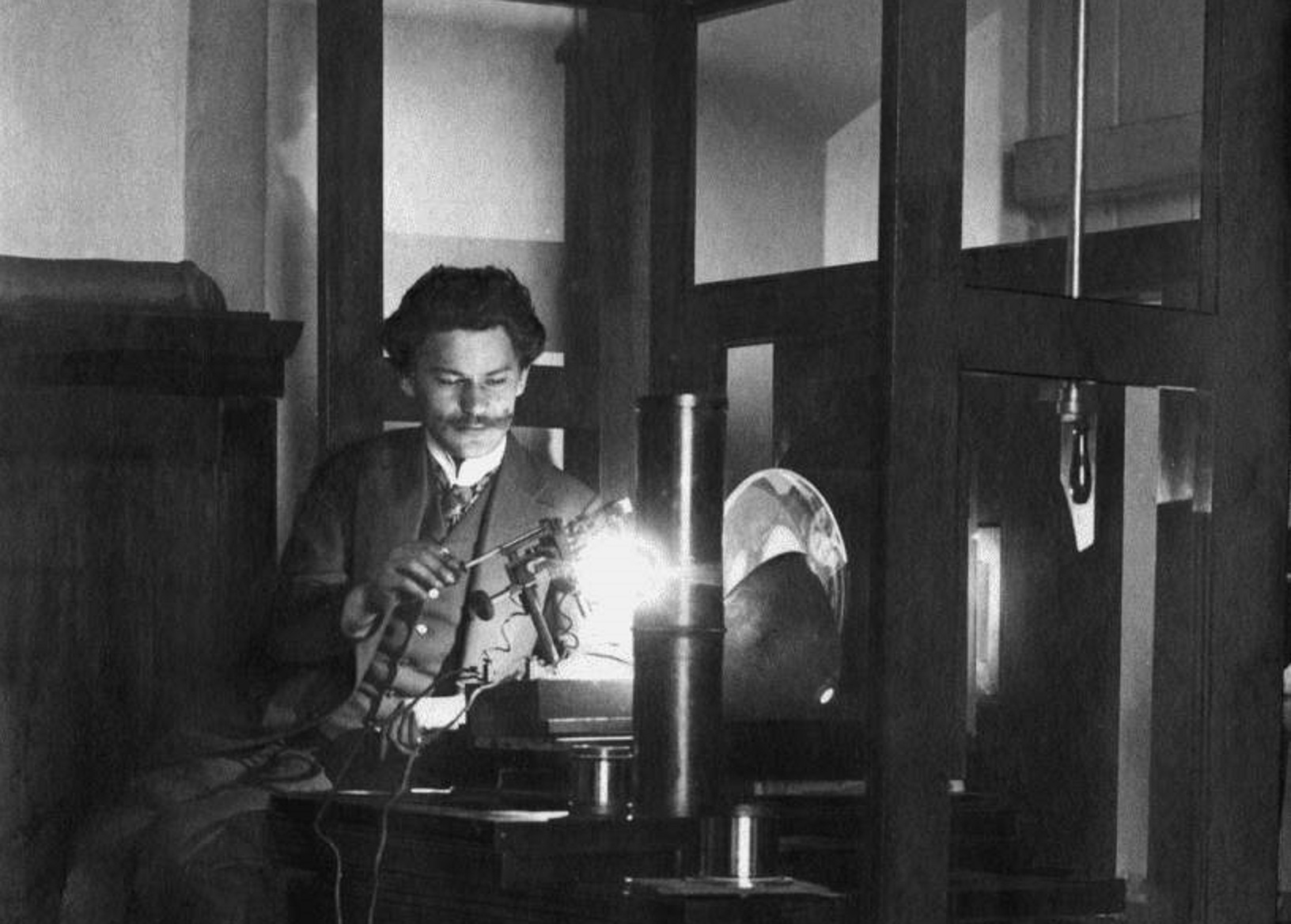Hieronim Dekutowski “Zapora” feared most that the communists would manage to destroy the memory of the heroic struggle of the Cichociemni – tells Mirosław Widlicki, president of the Warsaw-East District Board of the World Association of Home Army Soldiers. Have they succeeded? Who were the “Cichociemni” and why are they often called the elite of the Polish army during the Second World War?
polishhistory: Who were the “Cichociemni”? What was the concept behind the conscription of these men into the army? After all, they were not a typical military unit.
Mirosław Widlicki: The “Cichociemni” were soldiers selected from the Polish Army who were in Great Britain during the Second World War. They volunteered for special training and were then sent to German-occupied Poland. The term “Cichociemni” was coined during training sessions in Scotland, when officers (less often: enlisted privates) began to disappear from military units at night, “fading” quietly into the darkness – in truth, simply discreetly leaving for training… It was the perfect name for them and it stuck. It sounded even better in Poland, since they would fall in complete silence from the dark sky, so, what else to call them? There was no other choice than “Cichociemny” (“Silentlydark”). They were sent in teams of 2-6 and allocated to various tasks. They never formed an official unit, and they never assembled for a meeting. Many of them never even met.
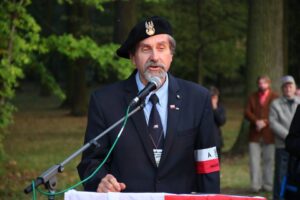
After the fall of France, the Government of the Republic of Poland and the majority of the Polish Army found themselves in the British Isles. It was necessary to maintain the fighting spirit in the country, because imminent victory over Germany was identified with France and Władysław Sikorski. In England, planes were available, and there were opportunities to train paratroopers. Two officers did a great job, and they were both great enthusiasts of parachute troops: Captain Jan Górski and Captain Maciej Kalenkiewicz. They were the authors of basic studies and instructions regarding the organization, including training, communication, signaling and preparation of reception facilities for securing the reception of Cichociemni and its couriers as well as equipment discharge for the needs of the Home Army.
Expectations were high as in the German-occupied country, officers were scarce. Of course, specialists in subversive and guerrilla operations were most urgently needed, but communications, intelligence, staff work officers, aviation and armor specialists, and experts in legalization were also important. There was also a huge shortage of weapons, ammunition and dressings.
Were the Allies ready to respond to this demand?
As a result of the hostilities and the emerging political situation, the British command lost interest in supporting the Home Army in preparations for a general uprising. What counted more [to them] were good relations with Stalin. Hence, the constant shortage of aircraft was apparent, even promising attempts to obtain long-range bombers from the United States were shot down. There were many willing to jump “into the country”, and even those who had already completed the necessary courses and preparations were waiting for their turn.

The functioning of “Cichociemni” was closely linked with the activities of the Allied forces. They were trained in British special operations centers and the RAF parachuted them. What was this collaboration like? What role did the “Cichociemni” play in the plans of Western countries?
All matters related to “Cichociemni” on the Polish side were under the control of the Special Unit which was subordinated to the Chief of Staff. These functions were performed successively by General Tadeusz Klimecki (until his death in Gibraltar on 4 July 1943), General Stanisław Kopański, and from 22 May 1944 until the end of the war by General Stanisław Tatar. The Special Division worked closely with the British subversive organization SOE (Special Operations Executive), i.e. the Special Operations Management. The SOE was established on 16 July 1940, and was divided into national sections. The SOE organized and conducted special operations behind the enemy lines in the field of diversion, sabotage, communication with the national resistance movement, supplies, coordination of domestic activities with frontline operations, intelligence and propaganda. The Polish section was initially headed by Bickham Sweet-Escott and Harold Perkins.
The SOE, together with the Special Unit, co-organized the training of Cichociemni, collected military equipment for the Home Army, and co-financed the activities of the “Wachlarz” organization (operating at the rear of the German eastern front). Their task was also to provide aircraft for special operations. A military parachute jumper center was established in Ringway, near Manchester. The first twelve Polish soldiers were trained there. It is worth adding that it was the Poles who built the so-called Monkey Grove near Leven, England’s first parachute tower. It was the training center of the 1st Polish Independent Parachute Brigade.

The Special Unit enjoyed great independence when it came to setting targets for the paratroopers. The SOE did not supervise the activities of Cichociemni, and did not even know their pseudonyms. Among all resistance movements, only the Poles had a radio network uncontrolled by London with their own codes, their own expeditionary services and network of receiving posts. The Foreign Office decided on the size of the allocations of weapons and equipment.
Undoubtedly, “Cichociemni” faced extremely difficult and dangerous tasks. What was their preparation for the mission like? How were they equipped?
In accordance with the order of the Prime Minister of 28 November 1939 “people should be selected with a tough, strong character, brave, decisive, ideological, capable of unconditionally keeping secrets”.
Cichociemni were recruited from soldiers of the Polish Armed Forces, and they were all volunteers. Those who signed up were trained to perform special tasks. There was a unit of parachutes, diversion, sabotage, intelligence, radio operators, rifles, sappers / miners, communication and guerrilla operations, hand-to-hand combat (training took place with the use of knives, daggers or completely without the use of weapons, the so-called “silent killing”), or orientation in the field. Courses for candidates of the Cichociemni were organized in secret SOE centers known as the STS (Special Training School). STSs were located in Great Britain, and later also in Italy. They started with the so-called training course, which focused on physical conditioning and provided an opportunity to select candidates. They were taught survival in the forest, field studies, shooting with various weapons in various positions, hand-to-hand combat, mining, diversion, and the use of explosives. Over time they became physically toughened after these murderous exercises. These courses were organized first in Inverlochy Castle, then in Garramour near Arisaig.
Psychotechnical examinations were organized and skydiving courses were completed by 703 candidates. Another element was the underground combat course and the briefing course. Only then was there an opportunity to specialize in radiotelegraphy or in the so-called Polish intelligence school.
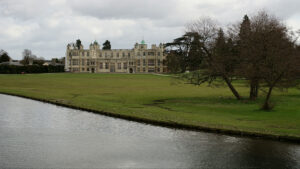
73 people graduated from this “Polish school of spies”, operating under the code name “Military Administration Officers’ Training Course”. It operated initially in London, then in Glasgow. Its commander was Colonel Stefan Mayer, the pre-war chief of counterintelligence and intelligence of the General Staff of the Polish Armed Forces, supervising, inter alia, work on the effective cracking of the codes of the German “Enigma”. The training program of the “spy school” included, among others: the intelligence study of Germany and Russia, intelligence techniques, counterintelligence methods, radio telegraphy, classes in intelligence chemistry, ciphers and intelligence photography.
After successfully completing all training and qualifying for a flight to Poland, the jumpers took the oath of the Home Army – Rota. The soldiers designated for the flight to Poland went to the Waiting Station and were under the exclusive disposal of the Head of the “S” Department. Before moving to the station, each jumper received severance pay in the form of banknotes and gold dollars and a certain amount of German currency (Reichsmark) and zlotys (Młynarki). Dollar bindings were packed in metal cans, and Reichsmarks and Młynarki were hidden in purses.
Did Cichociemni receive special equipment?
Yes, they were perfectly equipped. They received, among other things: parachute equipment (coverall, helmet with glasses, elastic bandages for ankles and shoe inserts), weapons (two automatic pistols, ammunition and spare magazines, a folding knife), as well as a shovel, a flashlight with a spare battery, a compass, a flask for alcohol and a first aid kit). In addition, the jumper was allowed to take with him only a few private items (watch, lighter, etc.) that were closed related to his “legend”. Permission to take these items was issued by the commander of the clearance course during the final control of the legends. At the waiting station, the jumpers additionally received an Irwin type X back parachute or a harness for the Irwin type A parachute, a set of maps of the landing area, a list of equipment dropped with a given team, a portion of food and, upon request, poison (“L” tablet). Paratroopers also often wore belts made of strong impregnated linen that contained money sent to the country by the Polish Government in Exile.
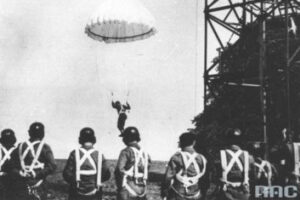
On the eve of the flight, the jumper was informed about the location of the receiving facility and the backup area, the identification codes of the facility and contact addresses in the provinces and in Warsaw. All this data had to be memorized by the jumpers along with an in-depth analysis of the landing area map. They were sent to occupied Poland, initially from Great Britain, and then, from the end of 1943, from the base in Italy.
Airdrops in Poland were collected and protected by members of the Home Army. What was the course of this type of action?
The jump was performed on the order of the commander of the plane. The drop height could not be less than 150 m for jumpers and 100 m for equipment, and the speed of the plane was about 200 km / h. Before the jump, the operator informed the paratroopers about whether the drop was at the receiving facility or reserve area.
In addition to Cichociemni and the couriers, 670 tons of combat equipment (weapons, ammunition, explosives, medical supplies, radio stations, etc.) were dropped for the needs of the Polish underground. This equipment was dropped in special containers. Money for the resistance movement (Młynarki, dollars) was often dropped in special packages with a parachute attached.
How were people prepared to receive Cichociemni?
The collection of airdrops in the country was handled by a special unit of the V Division of the Home Army Headquarters / Union of Armed Struggle, existing at least since autumn 1941. Its functioning was constantly modified. There were several basic rules: the arrival of the aircraft was signaled on the day of the operation with fixed melodies broadcast on Polish BBC programs, and later with the so-called “ducks” – specially encrypted messages. The method of making the drop and its collection was regulated by the instructions, which were the same for all planes and outposts.
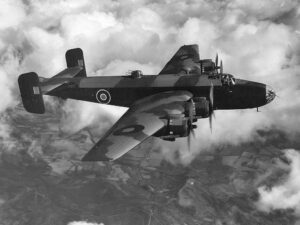
The collection of the jumpers and equipment was preceded by arduous preparations on the ground. The beginning of the operating season was preceded by the departure of a previously trained employee called the “Delegate of the Main Headquarters” into the area. They marked the drop field. Field observation points, the so-called obsmeldung, were scattered throughout the territory of the General Government, along with gendarmerie outposts, anti-aircraft artillery positions and other potential threats. After choosing the place of collection of the drop, the commander of the receiving facility appointed soldiers to perform tasks in the receiving group, the evacuation and protecting teams. In 1944, in some districts, the airdrops were collected by partisan units. The records of the S Division of Division VI include 642 outposts (some of them are the same outposts with a changed code name, and some of them were “burned” and could not be on watch).
What happened to the paratroopers who had already arrived in the country?
I will describe the first hours after the jump in the words of one of the participants of the drop-off of three Cichociemni on the night of 16/17 September 1943, including Hieronim Dekutowski “Zapora”: “Only after the third return of Halifax under the parachutes we recognize the silhouettes of people. On the ground, there is a lot of hustle and bustle when loading containers onto carts. The plane flashes goodbye, takes a north-west direction and disappears behind the forest. The soldiers of the drop team run towards landing jumpers. Paratroopers in special coveralls, fastened with wide belts, with “Colt” pistols in both hands, mention the slogan “Janek”. We reply, “it’s me, Roman.” A warm welcome follows.”
From that point on, the jumpers were officially under the command of the commander of the Home Army and went to the nearest headquarters. The belts with: money, orders and codes for the Home Army Headquarters were taken from them. After a meal, clothes were checked – any items of clothing that could arouse suspicion were discarded. Cichociemni were also given a lesson about the principles of underground life and the situation in the country. The paratroopers traveled by train to Warsaw, where each of them was taken care of by an “aunt” – a designated person with whom he adapted to the conditions of life under the occupation. After the implementation period, depending on the skills of the jumper and the current situation, the Cichociemny was assigned to the appropriate service.
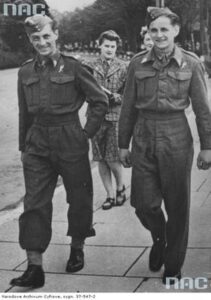
Your father, 2nd Lieutenant. Jan Widlicki pseudonym “Orski”, as a soldier of the Home Army, commanded one of the collection operations. Did he talk about those events?
My father told me that during the night of 16-17 September 1943, as the commander of Outpost XIV “Pniewo”, he commanded the safe collection of the “drops” and containers with equipment. Exactly – “drops” – that was what he called them. In official documents from that period, several terms were used: “drop-offs”, “jumpers” or “birds”, not “Cichociemni”. Younger participants of this action liked the term “birds” more. We didn’t get to know many details until many years later: for those telling about it these things were obvious. Of course, these stories did not contain the most important thing, who the “drop-offs” were and what their further fate was. In communist times, these were taboo topics. We found out for the first time, many years after the war, from Jędrzej Tucholski’s book “Cichociemni” who were the “drop-offs”.
For several years you have been organizing historical reconstructions of “cichociemni” drops, during which the audience can see parachute jumps performed on contemporary equipment. How do people perceive these shows? How are “Cichociemni” remembered in Poland today?
For over a dozen years, through various publications, we have tried to reach young people so that they could learn about the air support for the Home Army, about the Cichociemni airdrops, and about the stories of the Cichociemni soldiers. But only the reenactment ofCichociemni drops, presented as a historical spectacle during military-patriotic picnics, have resulted in a breakthrough. Today it is much easier to reach young people through images and by presenting historical events in the form of a performance. Exhibitions and publications on this subject complete the message. Why am I organizing the “Drop of the ZAPORA?” Certainly, my relatives were involved in the reception of this airdrop: I know almost all the details. However, the decisive factor for me was what “Zapora” feared most about. He confided in his fiancée of his fear about lost “Polish affairs”, about the possibility that the communists would manage to destroy the memory of the heroic struggle of the Cichociemni.
Interviewer: Mateusz Balcerkiewicz
Translation: Alicja Rose & Jessica Sirotin

